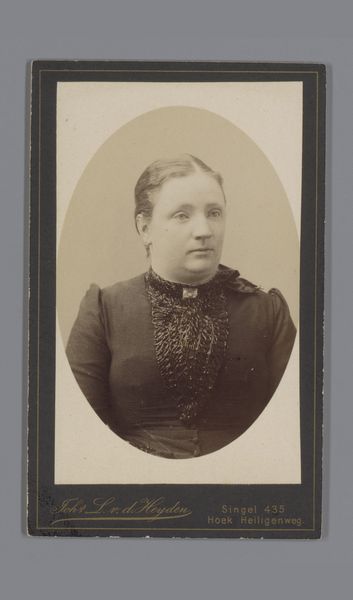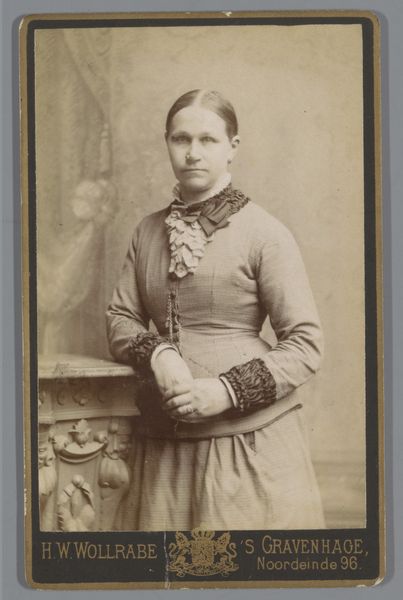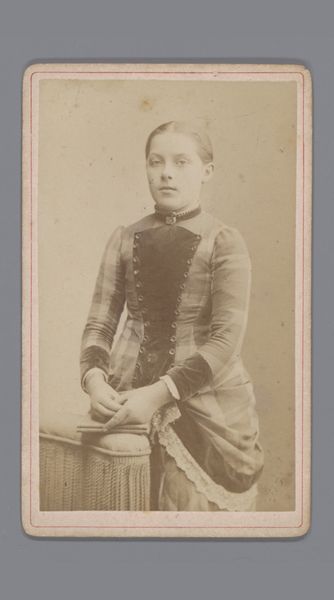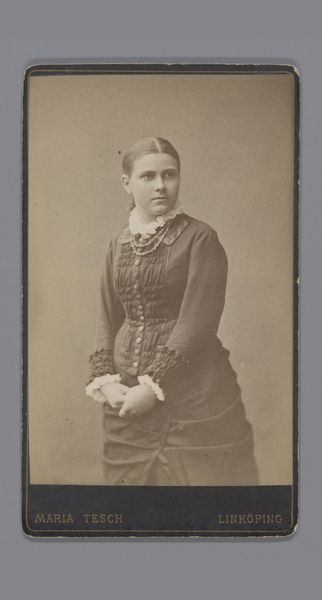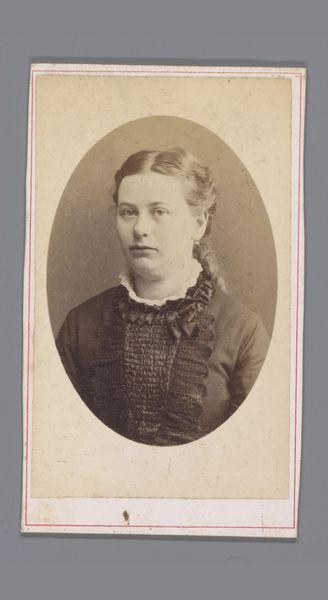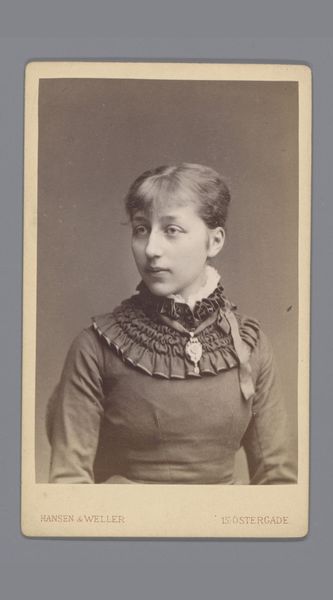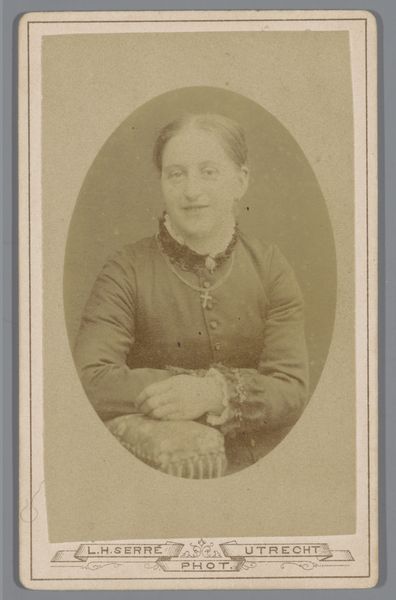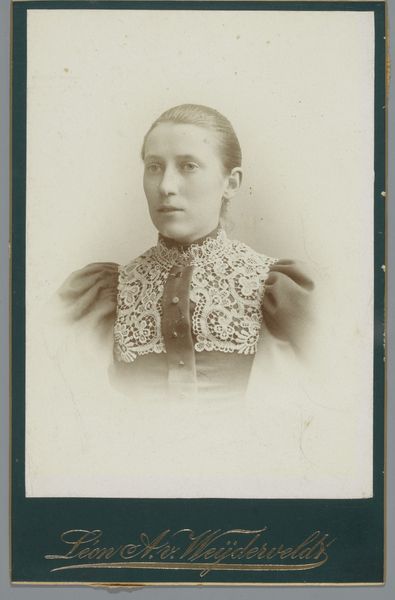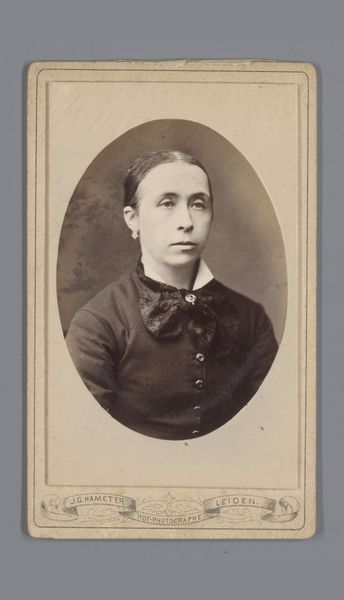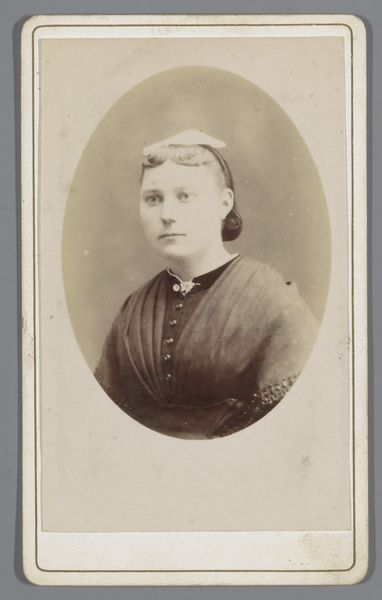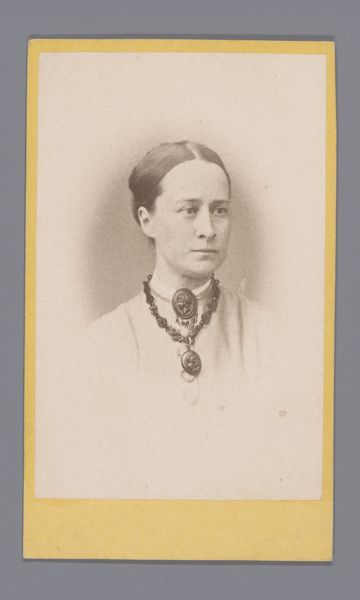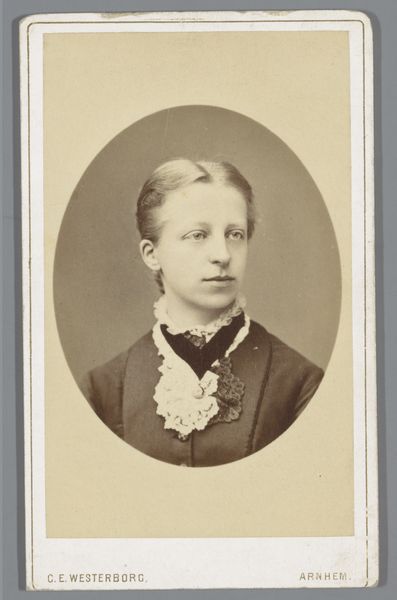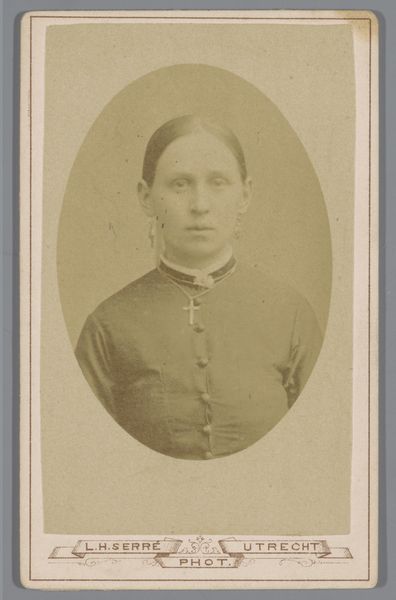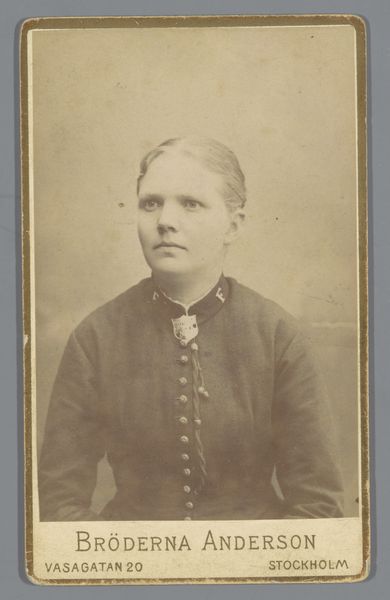
photography, gelatin-silver-print
#
portrait
#
figuration
#
photography
#
historical fashion
#
gelatin-silver-print
#
19th century
Dimensions: height 105 mm, width 64 mm
Copyright: Rijks Museum: Open Domain
Curator: Before us, we have a gelatin silver print simply entitled "Portret van een onbekende zittende vrouw," or "Portrait of an Unknown Seated Woman." The photo comes to us from sometime between 1880 and 1904 and is credited to Louise Lefrén. Editor: The unknown woman in the portrait projects a remarkable quietness, even defiance. The muted tones of the print really draw you in, making the textures of her lace collar and cuffs stand out against the darker fabric of her dress. Curator: These portrait photographs became immensely popular at this time and reveal fascinating aspects of society during the late 19th century. Photography became far more accessible to a rising middle class who could emulate upper class portraiture. Editor: Exactly. What's so fascinating is considering the woman's identity – she's not identified, yet she's deliberately presented in this composed way. It forces us to question who had the right to be seen, to be documented. Her expression invites speculation – what was life like for women, for ordinary women, during this period? The image serves as a strong commentary on class, gender, and visibility. Curator: Her posture, her garments, tell us quite a lot about the performance of femininity expected at that time. And note that while Lefrén’s name appears at the bottom, suggesting authorship, even then there’s an interesting, subtle social critique being made. To me it’s a testament to her craft, placing her in conversation with similar studios of the time, even though as a woman her agency was limited. Editor: I think you're right about her subtle protest through portraiture. Consider how rare it was for women to control the means of representation. Every choice – the subject's gaze, the tight framing, and her clothing—communicates a particular story, while refusing to divulge every detail. Curator: It underscores the role portraiture plays in shaping perceptions. The way images circulate, how they are archived, and who has access to them are crucial aspects of understanding photography's impact. Editor: Absolutely. This portrait reminds us that archives can be radical spaces, prompting discussions about who gets remembered and why. It inspires a re-examination of the assumptions and power dynamics that construct our historical narratives. Curator: Indeed, and for that, it serves as a vital, even political, image for our contemporary moment. Editor: Right, something that makes us ask the challenging questions about whose stories are remembered, told, or, regrettably, untold.
Comments
No comments
Be the first to comment and join the conversation on the ultimate creative platform.
